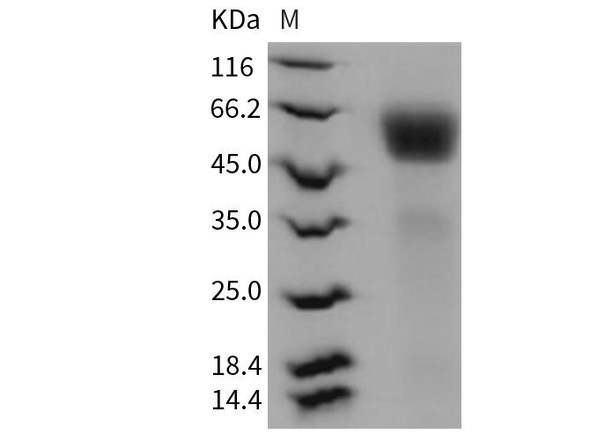The type I IL-1 receptor (IL-1 RI, designated IL-1 R1 and CD121a) is one of at least nine members of the IL-1 R family with anin the Toll/IL-1 R (TIR) superfamily. IL-1 RI is an 80 kDa type I transmembrane (TM) protein that binds the pleiotropic cytokines IL-1 alpha and IL-1 beta, plus the IL-1 receptor antagonist (IL-1 Ra). Signal transduction requires complex formation with an the IL-1 R accessory protein (IL-1 R AcP/IL-1 R3), another type I TM protein. This complex recruits the adaptor protein MyD88, to initiate signaling in the NF kappa B pathway. Rat IL-1 RI cDNA encodes a 576 amino acid (aa) protein that contains a 19 aa signal sequence, a 319 aa extracellular domain (ECD) with an three C2-type Ig-like domains, a 21 aa TM domain and a 217 aa cytoplasmic region with an a TIR domain. Rat IL-1 RI shares 83%, 65%, 60%, 60% and 54% aa identity with an Mouse, Human, canine, equine and bovine IL-1 RI, respectively. Two additional splice isoforms of rat IL-1 RI have been described. One has an N-terminus that is extended by 14 amino acids, but appears to have equivalent function. The other lacks the TM sequence and is secreted as an ~82 kDa protein that antagonizes the effect of IL-1 beta. Thus, the role of IL-1 in inflammation is under several levels of control, including expression and activation of IL-1 alpha and IL-1 beta, expression of IL-1 RI and its accessory and adaptor proteins, and inhibitory IL-1 R isoforms and decoys (1-6). IL-1 RI is expressed predominantly by T cells, fibroblasts, and endothelial cells and mediates acute phase inflammatory responses including fever.






